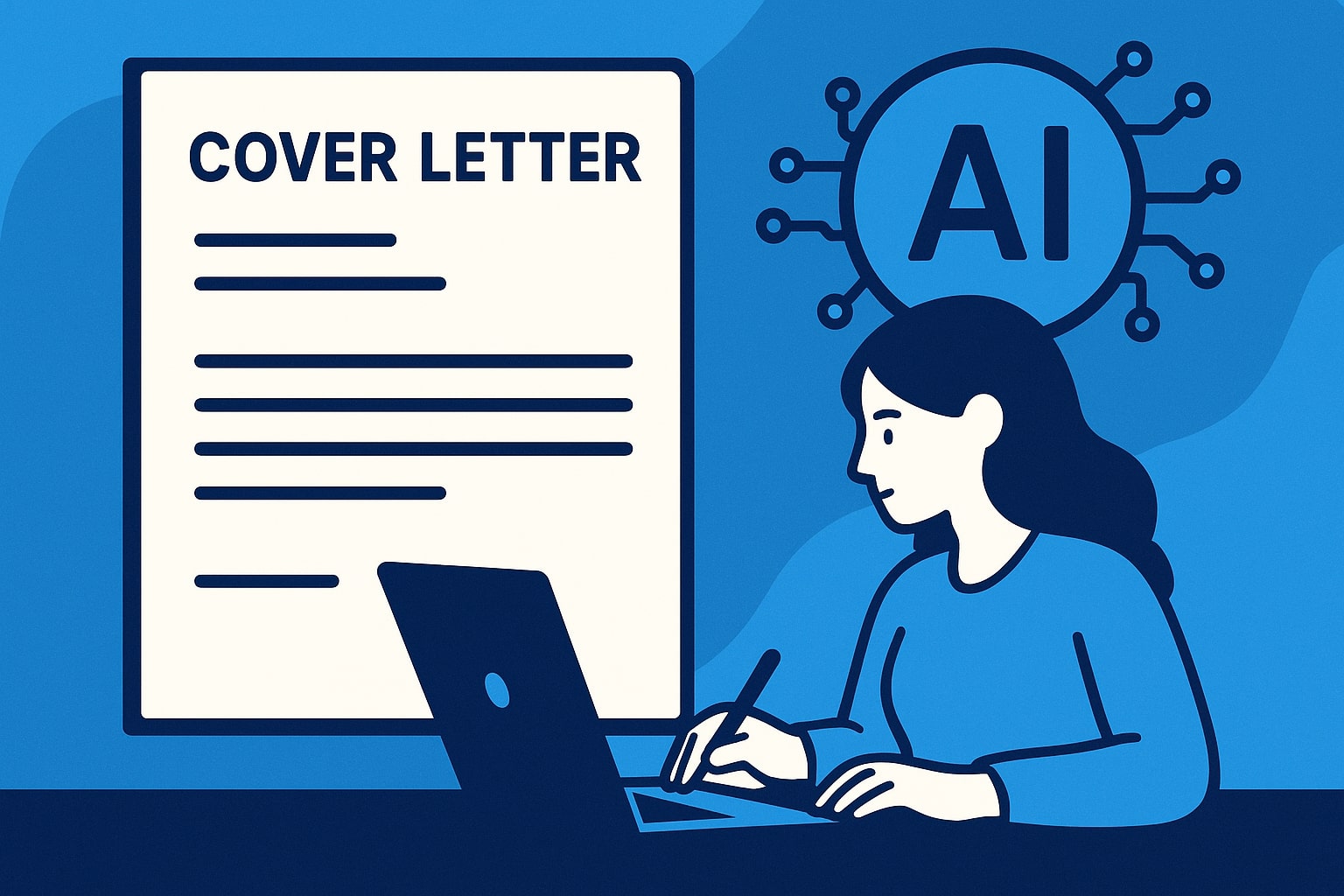Here’s a statistic that might surprise you: candidates who submit personalized cover letters are 49% more likely to land interviews, according to a 2024 TopResume survey. In an era where robots screen your application before humans ever see it, that human touch in your cover letter has become your competitive advantage.
Think about it. Every job posting attracts hundreds of applicants. Your resume lists your qualifications, but so does everyone else’s. Your cover letter? That’s where you tell your story—where you show hiring managers not just what you’ve done, but why you’re the perfect fit for their specific role.
The reality of modern hiring is this: Applicant tracking systems (ATS) filter applications at lightning speed, but hiring managers still want to connect with real people. Your personalized cover letter bridges that gap, showcasing qualities that algorithms can’t measure—your motivation, cultural alignment, and genuine enthusiasm for the role.
When Cover Letters Matter Most: The Mid-Career Advantage
If you’re applying for mid- to senior-level positions, pay close attention. Research from JobScan’s 2024 report reveals that 55% of hiring managers prefer personalized cover letters for experienced roles. Why? Because at this level, it’s not just about skills anymore.
Senior hiring managers look for three critical elements:
- Context for career transitions – explaining pivots or gaps that resumes can’t capture
- Leadership philosophy – demonstrating how you inspire and manage teams
- Cultural fit indicators – showing you understand the company’s values and vision
Consider this scenario: Two marketing directors apply for the same role. Both have impressive resumes with similar achievements. But one submits a generic template, while the other crafts a letter connecting their past success in scaling digital campaigns to the company’s stated goal of expanding their online presence. Who gets the callback?
The answer is obvious. Personalization isn’t just nice to have—it’s the deciding factor.
The Three-Way Fit Method: Your Blueprint for Success
The most compelling cover letters follow what we call the “three-way fit” approach. This framework aligns your narrative across three dimensions that hiring managers care about:
1. Your Past (Relevant Accomplishments) Don’t just list what you did—show measurable impact. Instead of “responsible for sales,” write “increased sales revenue by 30% within one year by implementing targeted digital outreach strategies.” Quantify everything you can.
2. Your Present (Current Skills Alignment) Research the role’s requirements deeply. If the job description emphasizes “cross-functional collaboration,” highlight a recent project where you successfully coordinated between engineering, marketing, and sales teams. Mirror their language naturally.
3. Your Future (Vision for Growth) Express genuine excitement about where the company is heading. Reference recent initiatives, product launches, or strategic shifts. This shows you’ve done your homework and you’re thinking beyond day one.
This three-way approach transforms your cover letter from a summary of credentials into a compelling narrative about why this role, at this company, at this moment, is the perfect next chapter in your career.
Cracking the ATS Code: Keywords That Get You Through
Modern ATS technology has evolved beyond simple keyword matching, but strategic language still matters enormously. Here’s how to optimize without sounding robotic:
Natural keyword integration means reading the job description carefully and incorporating role-specific terms organically. If you’re applying for a tech position, terms like “predictive analytics,” “distributed systems,” or “API integration” should appear naturally in your accomplishments. For finance roles, work in phrases like “portfolio optimization,” “risk assessment frameworks,” or “regulatory compliance.”
The key is authenticity. Don’t stuff keywords awkwardly—weave them into genuine stories about your experience.
Result-driven language makes every sentence count. Weak phrasing like “helped with project management” becomes powerful as “led a cross-functional team of 8 to deliver a $2M project 3 weeks ahead of schedule, improving client satisfaction scores by 40%.”
End with a confident call to action: “I welcome the opportunity to discuss how my background in scaling SaaS platforms can accelerate your growth objectives. I’m eager to contribute to [Company Name]’s mission of [specific mission].”
Industry-Specific Strategies That Work
What works in tech won’t necessarily work in healthcare. The most successful cover letters speak the language of their industry while connecting personal achievements to company-specific goals.
For technology roles: Reference the company’s tech stack, recent product launches, or engineering blog posts. Mention frameworks you’ve mastered and how they align with their infrastructure challenges.
For finance positions: Demonstrate quantitative thinking and risk awareness. Cite specific models or methodologies you’ve implemented and their measurable business impact.
For healthcare applications: Emphasize patient outcomes, regulatory knowledge, and interdisciplinary collaboration. Show how your work has directly improved care quality or operational efficiency.
The pattern is clear: top candidates don’t just list accomplishments—they connect their story to where the company is heading next.
How AI Tools Transform Your Cover Letter Process
Let’s address the elephant in the room: should you use AI to write your cover letter? The answer is yes—but with an important caveat.
Platforms like JobWinner.ai, Zety, and Resume.io have revolutionized cover letter creation. They generate ATS-optimized, role-specific drafts in minutes, eliminating much of the guesswork. JobWinner.ai, for instance, analyzes job descriptions and matches your skills automatically, creating personalized content that hits the right keywords.
But here’s the crucial step most people skip: the hybrid approach. Use AI for structure and efficiency, then infuse it with your authentic voice and specific examples.
Here’s the winning two-step process:
- Generate your foundation – Let AI create an optimized draft based on the job description
- Add your humanity – Revise with personal stories, specific achievements, and genuine enthusiasm
Imagine you’re a digital marketer. JobWinner.ai creates a solid draft highlighting your skills and matching them to the job requirements. You then edit it to include the story of how you pivoted a failing campaign mid-flight, turning a potential $50K loss into a $200K gain. That specific, memorable detail transforms a good cover letter into a great one.
Aligning With Company Values: The 50% Advantage
Research shows that candidates who demonstrate direct alignment with employer values are 50% more likely to secure interviews. This isn’t about flattery—it’s about proving you understand and embody what the organization stands for.
Start your research on the company’s website, recent press releases, and annual reports. Look for:
- Core values and mission statements
- Recent initiatives or pivots
- Awards or recognition they’ve received
- Challenges they’re publicly addressing
Then select a quantifiable accomplishment from your career that mirrors these priorities. If a company emphasizes innovation, highlight the project where you introduced a new workflow that improved efficiency by 30% and saved 15 hours weekly. If they prioritize sustainability, discuss how you led a green initiative that reduced waste by 45%.
This targeted approach immediately signals to hiring managers that you’ve done your homework and naturally align with their culture.
Common Mistakes That Kill Your Chances
Even with great content, these pitfalls can sink your application:
Generic templates – Using one-size-fits-all language screams “mass application.” Hiring managers spot this instantly.
Resume repetition – Your cover letter should complement your resume, not duplicate it. Tell stories that add context and personality.
Grammatical errors – Nothing undermines credibility faster than typos. Proofread multiple times, use tools like Grammarly, and have someone else review it.
Excessive length – Keep your letter between 250-350 words. Respect the reader’s time while making every sentence count.
Lack of specificity – Vague statements like “I’m a hard worker” mean nothing. Replace them with concrete examples and measurable results.
When you pair a tailored cover letter with a customized resume, you can increase your callback chances by up to 70%. The effort you invest in personalization directly correlates with your results.
Your Action Plan: From Generic to Game-Changing
Ready to transform your job search? Here’s your step-by-step implementation plan:
This week: Audit your current cover letter. Does it follow the three-way fit method? Have you quantified achievements? Does it mention the specific company and role?
Next application: Research the company for 30 minutes before writing. Find three specific details to reference—a recent project, a stated value, or a strategic goal. Weave these into your narrative.
Going forward: Create a master document with your top 10 quantified achievements. For each new application, select the 3-4 most relevant ones and build your letter around them.
Remember: AI tools like JobWinner.ai can accelerate your process, but your unique perspective provides the essential human element that makes hiring managers want to meet you.
Additional Resources for Job Search Success
Continue mastering your job search strategy with these expert resources:
- Master ATS filters with AI tools to maximize your visibility
- Deep dive into beating the ATS system with proven techniques
- Explore Teal HQ’s ultimate cover letter guide for additional perspectives
- Read Harvard Business Review’s insights on authentic cover letter writing
- Review FinalRoundAI’s top AI cover letter generators for 2025
The Bottom Line: Personalization Wins in 2025
The job market has changed dramatically, but one truth remains constant: genuine human connection still drives hiring decisions. While ATS systems and AI screening tools filter applications faster than ever, hiring managers ultimately choose candidates who demonstrate authentic understanding of their needs.
Your cover letter is your opportunity to stand out in a sea of generic applications. By combining AI efficiency with personal authenticity, strategic keyword optimization with compelling storytelling, and research-driven insights with measurable achievements, you create an application that resonates with both algorithms and humans.
The data is clear: personalized cover letters increase interview rates by 49%. Alignment with company values boosts your chances by another 50%. When paired with a tailored resume, your callback rate can jump by 70%.
These aren’t just statistics—they’re your roadmap to landing your next role. Start implementing these strategies today, and watch your job search transform from frustrating to fruitful.
Your next interview is waiting. All you need to do is show them why you’re the one they’ve been looking for.


